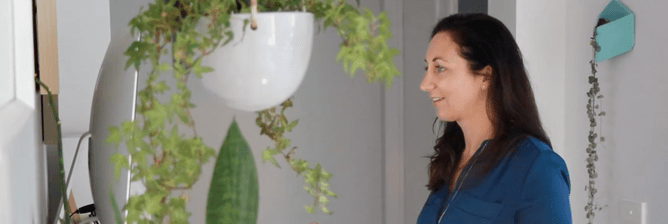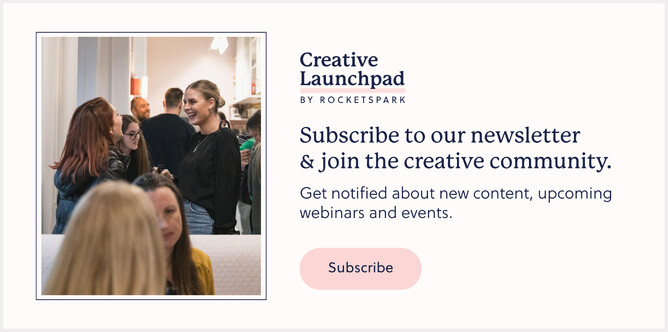Often in life, starting is the hardest part. That’s certainly how some of our design partners feel about web design. They’re usually gurus in their primary field (e.g., graphic design, marketing etc.) but often feel daunted by the prospect of tackling an entire web design project: How on earth am I going to do this??
The answer is: with a process. Coming up with a web design process that you can repeat for each project is vital. In this blog post, we’ll get you started by covering a few key elements of a robust web design process.
Rather than relying solely on our experience, we’ve asked one of our design partners Tonia Hill from Greenhouse Creative to chime in with her advice. Tonia is the real deal: a design partner who has expanded into taking on web design projects—and thus knows a thing or two about how to start a successful web design project.
Where do I start?
If you’re new(ish) to web design, you might be wondering where to begin. Tonia likes to start by making sure she’s clear on the client’s expectations:
The first thing I do when starting a web design project is try to ascertain what sort of functionality the site requires: is it e-commerce; is it membership-based; do they wish for their viewers to have some kind of interactive experience?
In other words, start by listening. But sometimes listening requires some probing and digging beneath what clients say to figure out what they actually need:
Often, clients will enquire initially saying they “just need a basic website” but when you question them, ask about their business, the processes they use and the ways in which they use their website, it quickly becomes apparent they might need a customised solution.
That said, knowing what is—and is not—technologically possible is important. Tonia explains:
Starting with technology and functionality is always the first step. There’s absolutely no point in designing or building a mac-daddy site if it doesn’t DO what it needs to do to make your client’s job easier. Having good knowledge of all Rocketspark’s features and add-ons makes it easy to recommend solutions and form the basis of a website quote and plan.
Worried you don’t have the technical knowledge necessary? Don’t worry—we do! And we’re behind you 100%. Reach out for help whenever you get stuck.
How to I get a good brief?
If listening to your client is the starting point, then getting a good brief is essential. It’s your primary tool for learning what a client is looking for in a website. But what makes a good brief? Tonia says:
A good brief is a thorough brief. It needs to outline the expectations of client, designer, the website and the expected results, from before the project starts until after it finishes.
So a good brief is about setting and managing expectations early on. And as Tonia points out, it pays to be thorough:
Don’t skimp on the briefing process. It can be tricky to invest “extra" time into a project that you haven’t gotten across the line yet, but spending the time and asking the questions upfront will save you time, effort and money down the track. It may even make you money as you can add extra fees to your quote for functionality that you otherwise may have missed the opportunity.
Need inspiration? Take a look at the Rocketspark design brief form for our prospective clients. You can also use our super-slick form builder to create a brief that can be used with all your clients so you never miss crucial information.
What do I need from the client?
“I’ll get it to you after the weekend” is a promise we hear a lot at Rocketspark, but one that often goes unfulfilled. Clients are well-meaning, but busy. That’s why Tonia likes to be proactive:
I often feel like the web design role is one of a Project Manager. It’s the co-ordination of technology and functionality with SEO and stories, branding and graphics, photography and videography—and then the ability to bring all of those things together into a seamless end-user experience.
If your client doesn’t know where to start, they’ll be tempted to procrastinate. For that reason, you might need to guide your client through the process:
I ask my clients for all of the things I’ve listed [in the quotation above] and we talk about the importance of each and whether or not it be wise for them to invest in each of those areas, rather than doing it themselves.
In our experience, images are one of those design elements where outsourcing is usually a good idea. Steering your client towards getting professional photos taken will make a colossal difference to the final product. Check out our advice about images here.
What if I don’t know something?
Nothing instills confidence like experience. But until you have a few websites under your belt, there’ll be times when you’re not sure how to carry out something the client wants. When that happens, be honest and upfront about it and tell them you’ll find out the answer and come back to them. Tonia’s advice for the briefing process—“Don’t be scared to ask questions”—applies equally to this situation too. Make sure you’re crystal-clear about what they’re after. And if you’re not sure how to deliver on that technically, remember to get in touch with us.
Should I ask for a deposit?
Absolutely. Nothing says “I’m in” like cold hard cash. And don’t make it too small either, because a token deposit won’t command the level of commitment that a more substantial one will. So how much should you stipulate? For a $1,500–3,000 project, a 50% deposit would not be unusual.
Yep, that’s significant coin, but then that’s kinda the point. They’ve paid, so they’re motivated to see the project through to completion. Clients will sometimes be reluctant to make a large down payment, but stick to your guns; a deposit is standard practice for the industry. Without a financial commitment, clients may delay the project or even pull the pin on the project entirely. No matter how well you set and manage their expectations, some projects will stall through no fault of your own (e.g., waiting on clients to supply you with web copy). If you haven’t requested a deposit, it could be a long time before you get paid. Better to lose a potential job by requiring a deposit than pour in hours of work only to find the project stuck in limbo with no sign of payment on the horizon.
Here’s something else to consider: when quoting a job, it can pay to include a condition that requires payment for work done in the event the project stalls. State that if you’re waiting on a client for more than three weeks, you reserve the right to invoice them for the work done thus far. That means you get paid for the work done, even if there are further delays on the client’s end. Fair’s fair.
Conclusion: It’s all about the process
Starting something new can be intimidating. But relax! It’s all about the process. Start by listening to the client and then take it step-by-step right through to that magic moment their brand-new website goes live. By following that process, you’ll arrive at a product that both you and your client will be proud of. And once you’ve got that process down, carrying out web design projects will start to feel like second nature.




